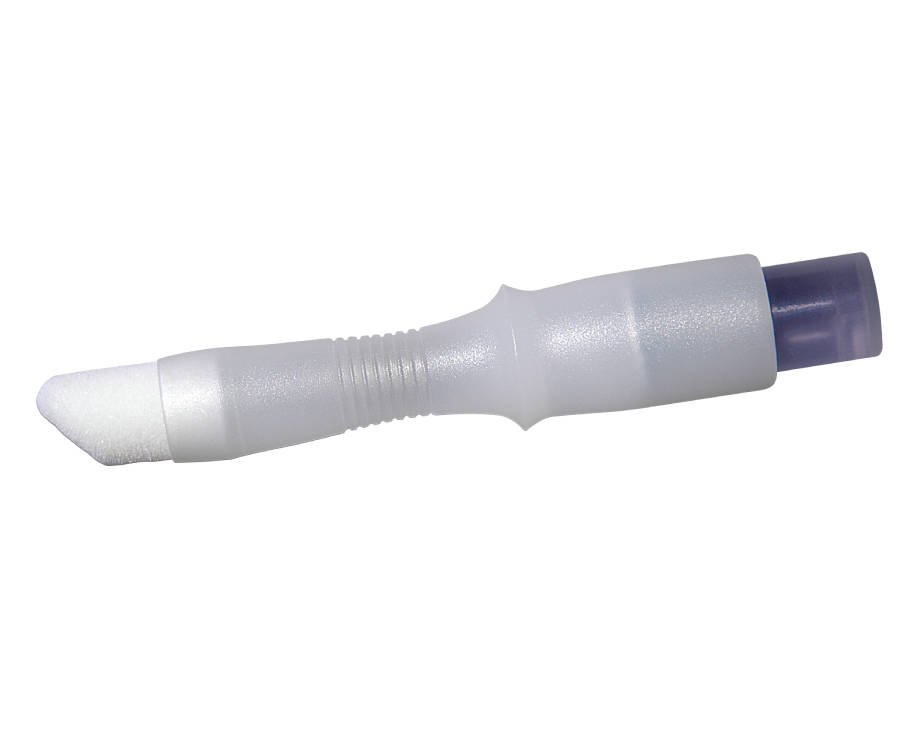Skin glue
About Klinion Skin Adhesive
Klinion® Skin Adhesive is a sterile, liquid topical skin adhesive for professional use, containing a monomeric (2-octyl cyanoacrylate) Surgiseal® formulation and the colorant D & C Violet #2. The applicator is comprised of a plastic button contained within a plastic vial with an attached applicator tip. The Stylus® applicator is contained in a secondary blister pack with a Tyvek closer.
Product benefits
- Ready to use in 3 simple steps
- Stylus® applicator ensures easy application
- Quick dry time of 60 seconds
- Can be used for 15-20 minutes after depressing the ampule into the applicator sleeve
- Forms a microbial barrier
- Storage at ambient temperatures
- Single use
Indications
Klinion® Skin Adhesive is intended for topical applications only to hold closed easily approximated skin edges of wounds from surgical incisions including punctures from minimally invasive surgery and simple, thoroughly cleansed, trauma induced lacerations. Klinion® Skin Adhesive may be used in conjunction with, but not in place of, deep dermal sutures.
Contra-indications
- Do not use on any wounds with evidence of microbial bacterial or fungal infections or gangrene.
- Do not use on mucosal surfaces or across mucocutaneous junctions, or on skin which may be regularly exposed to body fluids or with dense natural hair.
- Do not use on patients that have a hypersensitivity to cyanoacrylates or formaldehyde.
Application instructions
- Before use, the wound must be thoroughly cleaned.
- Use normal surgical protocol for wound preparation before treatment with the skin adhesive and make sure deep subcutaneous layers are sutured.
- Dry the injured area with a sterile gauze, removing all moisture for proper tissue bonding of the adhesive to the skin.
- To prevent inadvertent flow of the skin adhesive to unintended areas of the body, the wound should be held in a horizontal position and the skin adhesive should be applied from above the wound.
- Remove the Stylus applicator from the blister pouch. Hold the applicator with the thumb and forefinger away from patient to prevent any unintentional placement of the liquid skin adhesive into the wound or on the patient.
- While holding the Stylus applicator towards the ceiling and away from the patient, press the bottom of the applicator upward.
- Invert the applicator and allow the adhesive formula to flow through the tip. No squeezing is necessary in normal application. If greater flow is required, the ridged portion of the applicator may be very gently squeezed.
- Approximate the wound edges together using either gloved fingers or sterile forceps.
- Slowly apply the liquid skin adhesive in one thick, continuous layer or two thin layers. If two thin layers are applied, allow 30 seconds dry time in between layers.
- Maintain manual approximation of the opposed wound edges together for approximately 60 seconds once the final coating of the skin adhesive is applied.
NOTE: Excessive pressure of the applicator tip against the wound edges or surrounding skin can result in forcing the wound edges apart and allowing skin adhesive into the wound. Topical skin adhesive within the wound could delay wound healing and/or result in adverse cosmetic outcome.
NOTE: Full polymerization is expected when the top skin adhesive layer is no longer tacky. - Protective dry dressings, such as gauze, may be applied only after the topical skin adhesive film is completely solid/polymerized and not tacky to the touch. Allow the top layer to fully polymerize before applying a bandage. If a dressing, bandage, adhesive backing or tape is applied before complete polymerization, the dressing can adhere to the film. The film can be disrupted from the skin when the dressing is removed, and wound dehiscence can occur.
- Patients should be instructed to not pick at the polymerized film of the topical skin adhesive. Picking at the film can disrupt its adhesion to the skin and cause dehiscence of the wound. Picking at the film can be discouraged by an overlying dressing.
- Apply a dry protective dressing for children or other patients who may not be able to follow instructions for proper wound care.
- Patients should be instructed that until the polymerized film of the topical skin adhesive has sloughed naturally (usually in 5-10 days), there should be only transient wetting of the treatment site. Patients may shower and bathe the site gently. The site should not be scrubbed, soaked, or exposed to prolonged wetness until after the film has sloughed naturally and the wound has healed and is closed. Patients should be instructed not to go swimming during this period.
- If removal of the topical skin adhesive is necessary for any reason, carefully apply petroleum jelly or acetone to the SURGISEAL topical skin adhesive film to help loosen the bond. Peel off the film, do not pull the skin apart.
- Once the surface is tack-free, full polymerization has generally occurred.

